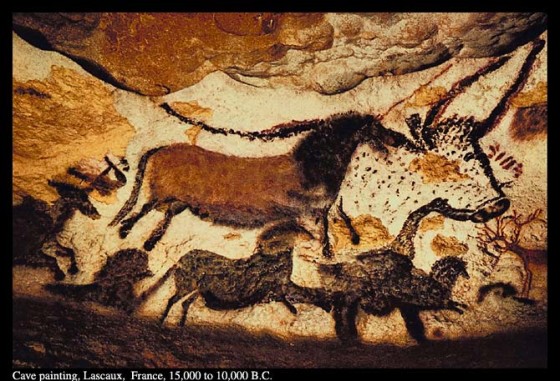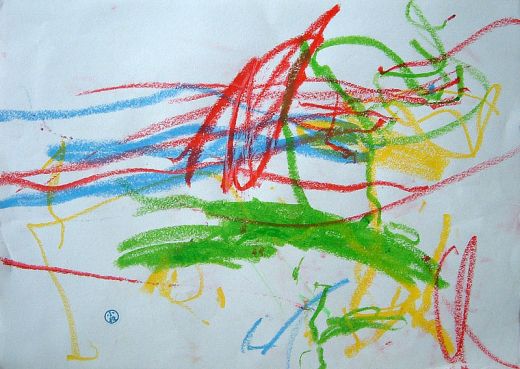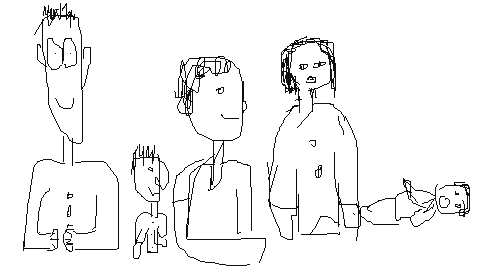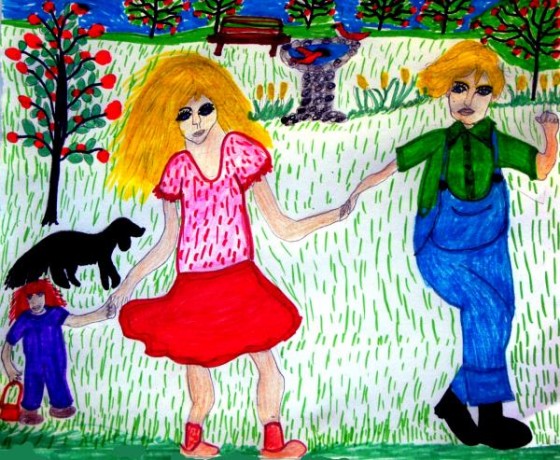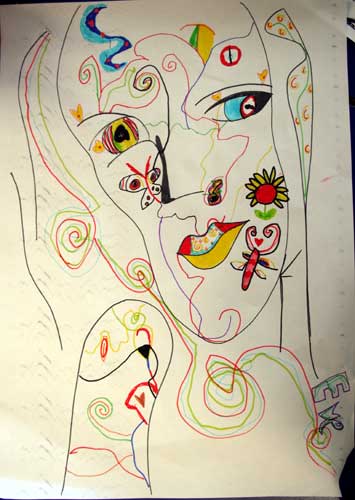Artistic Development – The Five Stages
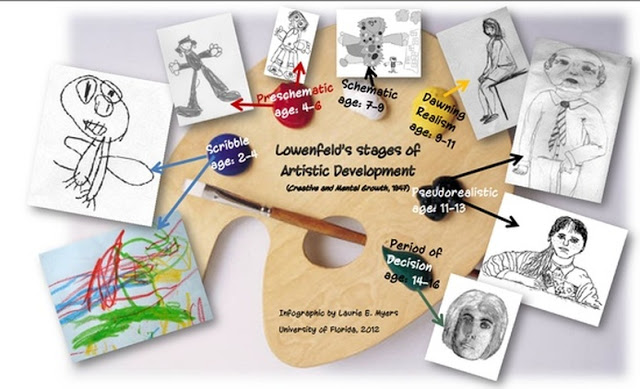
Every parent knows the peaceful silence of a child drawing pictures at the kitchen table. Art and creativity in general are mind opening activities that come naturally to all children.
Cavemen used drawing as a way to explain the world around them. Children still approach the outside world much like our prehistoric ancestors. Their tools are pencils, crayons and markers.
Drawing is a timeless art form that has many benefits for a young mind. Not only does it help a child reflect on the world around them, but drawing gives children a voice they haven’t yet developed. Children can express themselves by colors, shapes, and limitless imaginations.
For example; wavy lines can symbolize bumpiness or heat, straight lines for a flat surface, and jagged lines for roughness. Counselors use this to help young children discuss the problems they may have in their lives.
Five Stages of Artistic Development
There are five stages of artistic development. Each child is different, so their development will differ. That is why some children become quite artistic and others just barely manage a straight line.
Scribble Stage
This stage lasts between ages three and six. A young child’s drawings are random, colorful, and in some cases wildly chaotic. At this stage a child is learning how to use their fine motor skills to make the drawing tool do what they want.
Their pictures can express emotions and mirror personality. Also during this stage the act of drawing can teach young children how to share crayons, paints, and paper. Children also learn how to take turns and “play nice” together.
Scheme Stage
Pictures drawn by children ages six through nine begin to show evidence of design. Children start recreating the world they see. By this stage a natural artistic ability should emerge.
The act of drawing becomes a defining quality. It becomes a talent. This talent can be a source of identity and confidence. Towards the end of this stage, children begin to see how practice and hard work improve their skills and talents.
Intermediate (Practice) Stage
Once a child learns they can improve their drawing skills, then they begin honing those skills. Work begins to look more realistic and well proportioned. Through the ages nine and twelve children use art as way to express their desires and their dreams.
Other forms of arts are explored; all of which have their roots in drawing. Other activities can be encouraged through art. Activities such as sports, dancing, and academic pursuits (like Botany) can all be great subjects for drawing projects.
Faithful Reproduction Stage
This stage involves the child recreating familiar objects, photographs, and imagined scenes on paper. The child’s art becomes more realistic. They get better at drawing in relation to the paper or canvas. Their level of confidence surges at this stage.
This stage lasts typically between the ages of twelve and fourteen. This time window varies depending on the length of time a child chooses to study art. This is the stage before the final stage, but it is the most crucial time. Children learn who they want to be as an artist. Art is then a means of expression.
Spatial Representation
Finally the last stage is “Spatial Representation.” This stage is the beginning of the child’s creative journey. Researchers consider the beginning of this stage at around the age of fourteen.
But as mentioned earlier, that varies child to child. The “Spatial Representation” is another term for creative exploration. Children begin to reclaim the joy of drawing.
They start creating work that expresses their own personal beliefs and interests. Often a style of form is chosen as the primary drawing technique; such as realism, modernism, or abstract. Every child eventually develops their own style over time.
Art has been facilitating communication for ages. All children use art to communicate who they are and to help understand the world around them. This method of expression has many benefits including:
- Emotional Representation
- Social Interaction
- Confidence Building
- Personal Exploration
But perhaps the biggest benefit of drawing is the opportunity to bond with your kid. Next time you see your child drawing on the kitchen table, consider joining him or her and sharing the experience!
Please rate this post using the Stars and Thumbs below. Thank you.

